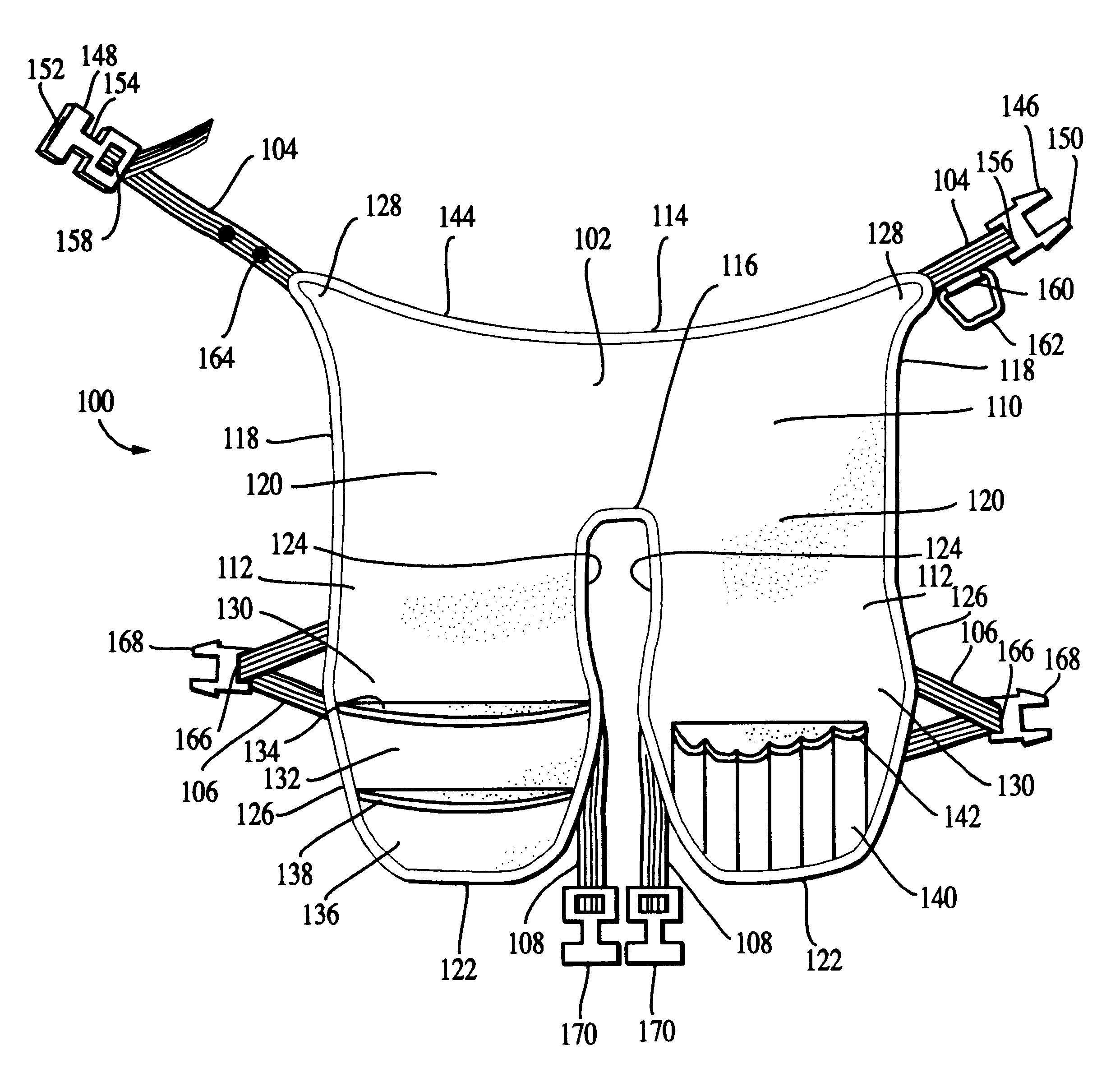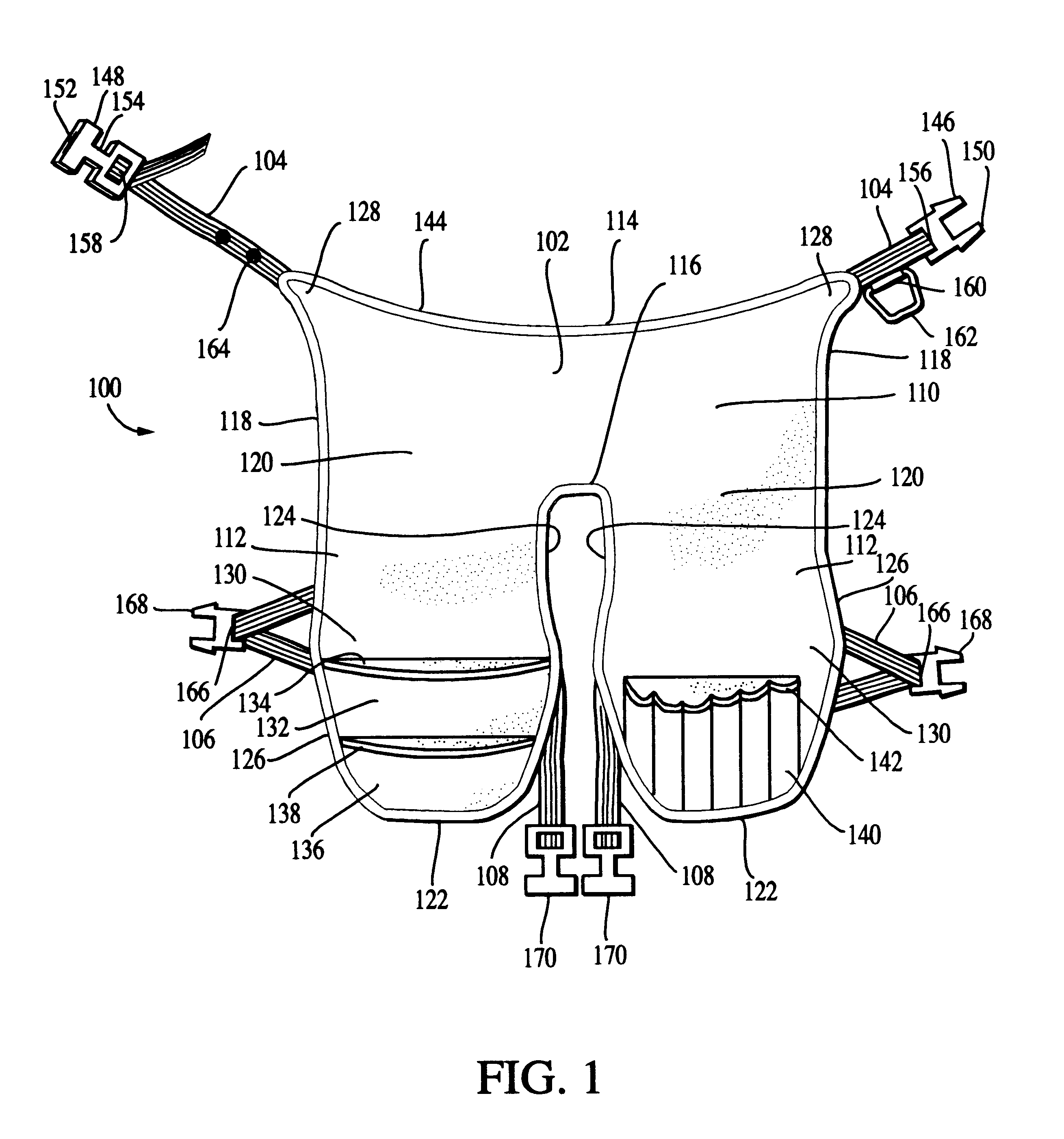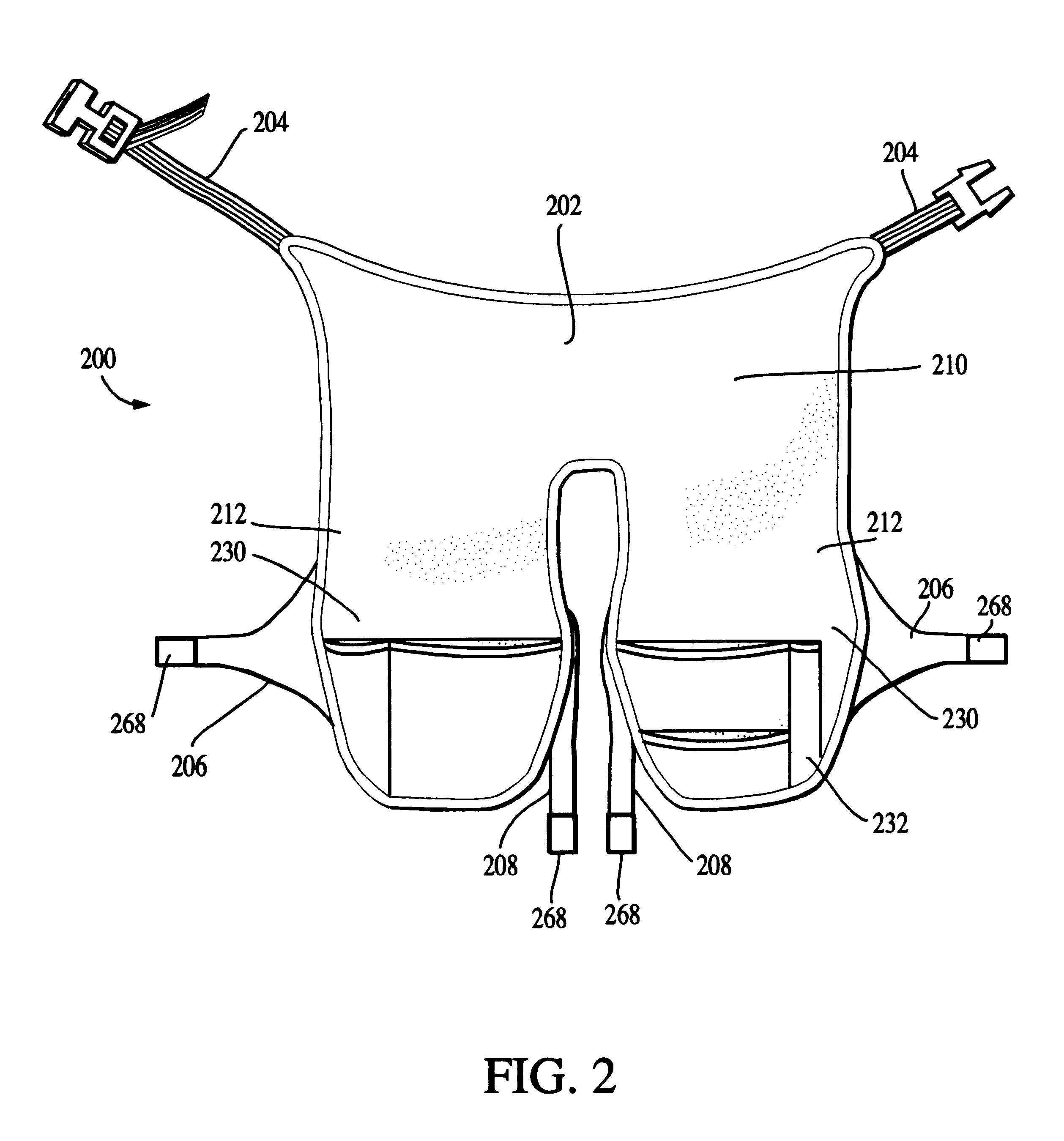Protective chaps for construction work
a technology for protecting chaps and construction work, which is applied in the direction of protective garments, toys, model railways, etc., can solve the problems of not being widely used for work aprons on construction sites, the most damage tends to occur to the upper portion and the front of the worker's pants are easily damaged, so as to achieve comfort and reduce mobility, the effect of optimal balan
- Summary
- Abstract
- Description
- Claims
- Application Information
AI Technical Summary
Benefits of technology
Problems solved by technology
Method used
Image
Examples
Embodiment Construction
Referring to FIG. 1, a first and particularly preferred embodiment of the protective chaps is designated generally by the reference numeral 100. The chaps 100 have three main components: a body section 102, which is used to cover a portion of the front of the worker's waist and upper thighs; waist straps 104, which affix the body section 102 about a worker's waist; and outer leg straps 106 and inner leg straps 108, which affix the body section 102 about a worker's legs. The body section 102 and straps 104, 106, and 108 will now be discussed in turn.
The body section 102, which is preferably integrally formed of a single continuous piece of material having characteristics which will be discussed later in this document, may be characterized as having three main subcomponents: a waist section 110, and a pair of leg sections 112 which descend beneath the waist section 110. The waist section 110 has a height measured vertically between an waist section upper edge 114 and an opposing waist...
PUM
 Login to View More
Login to View More Abstract
Description
Claims
Application Information
 Login to View More
Login to View More - R&D
- Intellectual Property
- Life Sciences
- Materials
- Tech Scout
- Unparalleled Data Quality
- Higher Quality Content
- 60% Fewer Hallucinations
Browse by: Latest US Patents, China's latest patents, Technical Efficacy Thesaurus, Application Domain, Technology Topic, Popular Technical Reports.
© 2025 PatSnap. All rights reserved.Legal|Privacy policy|Modern Slavery Act Transparency Statement|Sitemap|About US| Contact US: help@patsnap.com



